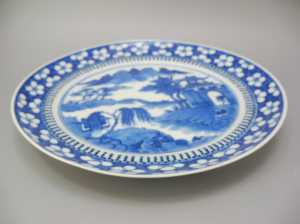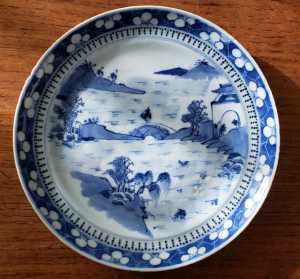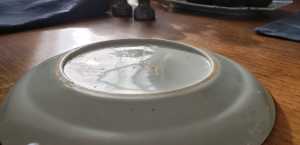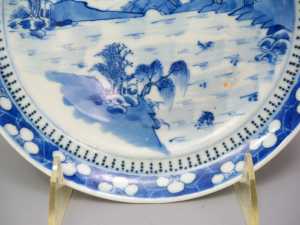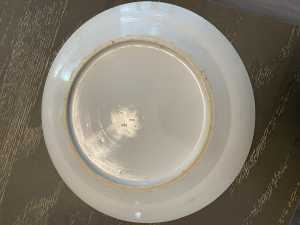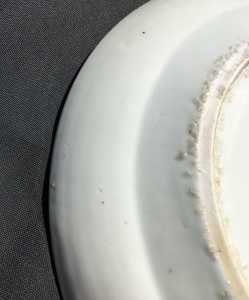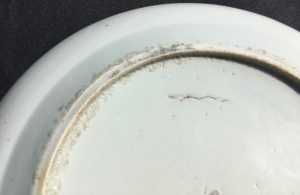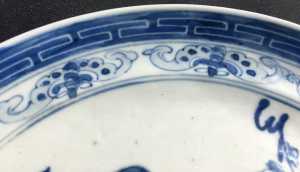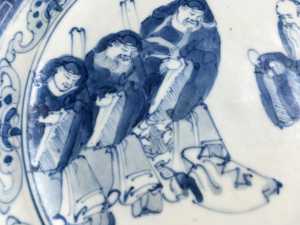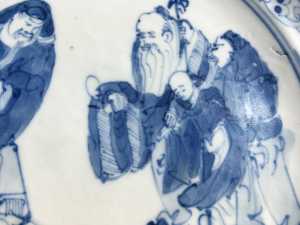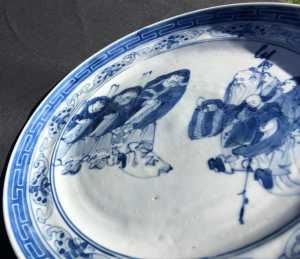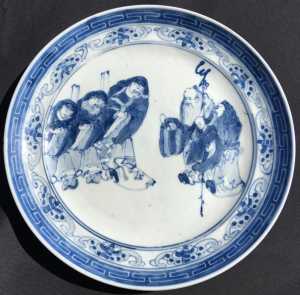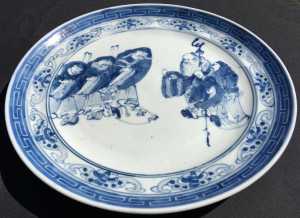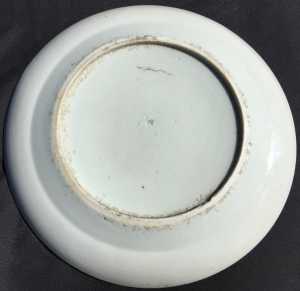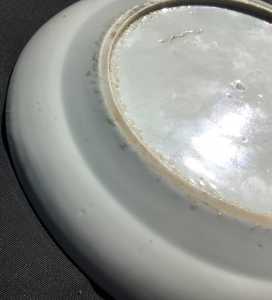The Chinese and Asian Art Forum. For Fans, Collectors and Dealers.
 Basic Rules For the BidAmount Asian Art Forum: Talk about whatever you want. You can even discuss and offer things that are for sale if they are authentic. Maximum image file size per post is 2 MB. Images of 700pxl x 700pxl are optimal if saved at a medium resolution. Be respectful of others and enjoy yourself. Click the YouTube link for a brief tutorial on using the forum. You can also EMBED Videos by cutting and pasting from You-Tube, Vimeo etc.
Basic Rules For the BidAmount Asian Art Forum: Talk about whatever you want. You can even discuss and offer things that are for sale if they are authentic. Maximum image file size per post is 2 MB. Images of 700pxl x 700pxl are optimal if saved at a medium resolution. Be respectful of others and enjoy yourself. Click the YouTube link for a brief tutorial on using the forum. You can also EMBED Videos by cutting and pasting from You-Tube, Vimeo etc.
NOTE: To post an item or add a new post, click open the category title from the FORUM LIST, and CLICK the Blue ADD TOPIC button.
Hi Kaitlin, nice that you have joined us.
I agree with a mid to late 19th c date for your plate. The base, border are very much of that period and the style of butterfly don't make me think Ming although the overall looser, washed in, drawing style is more so than Charles' plate. The butterflies are slightly different to Charles' plate, too but that could help you narrow down the date.
Thank you all for weighing in. I really loved the looseness of the figures and, like @Greeno107 pointed out, the calligraphic style of the details. With that said, I also fully expected to be told that this was a modern reproduction. It's nice to know that it's not. 🙂
I found one more example of this design being used on a plate on another site, which someone dated to the early 20th century:
I’m inclined to think this is still 20th century Peter has mentioned that transitional wares are being faked so good people can’t tell the difference I see many elements of different time periods. The pictures are not showing the entire story. The potter rushed the potting of the plate I can see the groves of the coiling where is the wear to this 400 year old plate? Does anyone have a legit comparison? I have personally seen copies with this same form. But maybe with closer photos and better lighting I could get a better assessment.
@cannoli -
Hi Kaitlin - and welcome to this wonderful forum ...
An interesting piece, but not late Ming, Transitional or Kangxi period, IMO ...
The upright T shape border motif is, as far as I recall, not seen until the mid 17th century, so around 1650, and examples in both blue and white and different enamels are known. The drawing style is, however, very different ...
Personally, I have never seen a transitional, or indeed Kangxi piece, where this border design is paired with inward facing bats, and it is very rarely depicted in white reserved against a blue ground during these periods ...
I will check library/database and revert if anything found
Whether this is a 19th or 20th century piece, as others have suggested, I lack the knowledge to say ...
Stuart
@lotusblack I'll see if I can get better photos tomorrow. Today was too dark and rainy! 🙂
this discussion is another excellent one. after looking at the evidences presented thus far, i could be persuaded for late late ming. the reason i rejected the idea initially was because i thought that the heaping and piling was fake, yet i did not have good images for it, and the foot rim seemed very 19th C to me. in no way can i see 20th c. or later.
so if the poster could publish a really good close-up of the heaping and piling, that would help. but ultimately i think artistic considerations will prevail. was heaping and piling still "a thing" in late ming? i remember the 18th c. qing became quite adept at faking it.
Hi Kaitlin, Tony and all -
The ‘heaping/piling’ effect, so often seen on early Ming wares had been eliminated from wares produced at the Imperial kilns by the mid/late Chenghua period, around 1470’s, and in the private kilns by the early/mid Zhengde, so 1510/15, at the latest …
This was due to the type of cobalt used and great improvements made in the grinding/refinement of such, first by the Imperial workers during Chenghua and in the private workshops from very late Hongzhi/early Zhengde periods …
It is unknown on late Ming, Transitional and Kangxi pieces, each of which has its own, and quite distinctive, painting styles, cobalt tones and shading techniques …
As always, some ‘overlap’ in such painting, shading and cobalt tones must be allowed between these differing periods …
Stuart
Hi Kaitlin, Welcome! Thanks for sharing your lovely plate. Although I've only been collecting for a few years, I thought I would chime in.
I agree with those who think it's 19th century mainly because of the shape of the plate and lack of fritting on the rim.
For comparison, here are a copule of plates that Peter appraised as late 19th c. Although the pattern is different & the foot rim doesn't have the grit that yours does, the shape of the body and the thin rim without fritting seem to match.
Anyway, my two cents.
Regards,
Steve
Hi Kaitlin, Tony and all -
The ‘heaping/piling’ effect, so often seen on early Ming wares had been eliminated from wares produced at the Imperial kilns by the mid/late Chenghua period, around 1470’s, and in the private kilns by the early/mid Zhengde, so 1510/15, at the latest …
This was due to the type of cobalt used and great improvements made in the grinding/refinement of such, first by the Imperial workers during Chenghua and in the private workshops from very late Hongzhi/early Zhengde periods …
It is unknown on late Ming, Transitional and Kangxi pieces, each of which has its own, and quite distinctive, painting styles, cobalt tones and shading techniques …
As always, some ‘overlap’ in such painting, shading and cobalt tones must be allowed between these differing periods …
Stuart
thank you - so the heaping and piling in the plate would be contrived and as such probably puts me my back to my original assessment because i don't think that late ming or transitional wares would create heaping and piling for nostalgic reasons.
Kaitlin,
I see the debate is raging.... Just my toss in, I think this is mid to late 19th century(1840-70) Chinese, possibly for the Japanese market. These seem to come up occasionally on Yahoo auctions, so I think that was their intended audience. the "Canton" foot as others have pointed out is in fact of the period. Just running on my own and seeing the things that turn up in Japan I think this was intended for their market. A beautiful plate nonetheless... very nicely drawn, and don't read too much into the way the glaze floats and "piles" Steve's (@steve ) example is stunning, and I think yours holds a torch next to it, however the rushed work of the figures seem just that, rushed...his also displays this nice electric blue that I expect.....
Lovely plate and I hope others put us one the right path of knowing and dating this.
Jeremy
Thanks for visiting "The BidAmount Asian Art Forum | Chinese Art"
If you sell on eBay, or have a shop feel free to post images and descriptions and links.
Check back often for discussion about the latest news in the Chinese art and antique world. Also find out about the latest Asian art auctions at Sotheby's, Christie's, Bonhams and Tajans.
Auction results for: fine porcelain, ceramics, bronze, jade, textiles and scholar's objects. As well as Japanese, Thai, Vietnamese and other Asian cultures.
Thank you,
Peter Combs
Topics and categories on The BidAmount Asian Art Forum | Chinese Art
Kangxi vases, Kangxi dishes and chargers, Kangxi ritual pieces, Kangxi scholar's objects, Qianlong famille rose, Qianlong enamels, Qianlong period paintings, Qianlong Emporer's court, Fine porcelain of the Yongzheng period. Chinese imperial art, Ming porcelain including Jiajing, Wanli, Xuande, Chenghua as well as Ming jades and bronzes.
The BidAmount Asian Art Forum | Chinese Art
A free Asian art discussion board and Asian art message board for dealers and collectors of art and antiques from China, Japan, Korea, Thailand, Cambodia, Vietnam and the rest of Asia. Linked to all of the BidAmount Asian art reference areas, with videos from plcombs Asian Art and Bidamount on YouTube. Sign up also for the weekly BidAmount newsletter and catalogs of active eBay listing of Chinese porcelain, bronze, jades, robes, and paintings.
The art of calligraphy - and for the ancient Chinese it certainly was an art - aimed to demonstrate superior control and skill using brush and ink. Calligraphy established itself as one of the major Chinese art forms during the Han dynasty (206 BCE - 220 CE), and for two millennia after, all educated men were expected to be proficient at it.
The Museum’s collections of Asian art span nearly five millennia and encompass the cultures of China, the Himalayas, India, Japan, Korea, and Southeast Asia. In 2007, the Museum launched an initiative to create dedicated galleries for the collection, beginning with a gallery for the arts of Korea ...
Chinese art is full of symbolism, in that artists typically seek to depict some aspect of a totality of which they are intuitively aware.
China Online Museum is the finest online museum of Chinese art. It features Chinese calligraphy, painting, ceramics, bronzes, carving, and other artworks.
Chinese Ceramics & Works of Art. Overview Upcoming auctions Contacts Auction results ... Christie’s sales of Chinese ceramics and works of art showcase centuries of Chinese history. Held throughout the year in London, New York, Paris and Hong Kong, they attract a wide audience of collectors and connoisseurs vying for pieces as diverse as ...
Explore Asian Art Week. Contact the Specialist Department. Chinese Paintings ... Senior Specialist, Head of Sale. [email protected]. Tel:+1 212 641 5760. Bid in-person or online for the upcoming auction:Fine Chinese Paintings on 10 September 2019 at New York. Bid in-person or online for the upcoming auction:Fine Chinese Paintings on 10 ...
Discover an abundance of must-see art from all corners of a vast continent at Christie’s NY Asian Art Week. From contemporary classical and Chinese paintings to works with exemplary provenance from the Art Institute of Chicago, our Rockefeller Paza galleries will be full of ancient treasures and contemporary masterworks in a salute to the vibrant arts of Asia.
Sold to benefit The Art Institute of Chicago’s Asian Art Acquisition Fund, the sale features 84 lots with a focus on Ming and Qing porcelains, and offers a rare insight into the taste for collecting Chinese ceramics and works of art in the Midwest from the end of the 19th century through the 1980s. Highlights include two Wanli wucai garlic-head vases, a Qianlong mark and period, blue and ...
Specialist, Chinese Paintings, Christie's London Dr Malcolm McNeill is a Specialist in Chinese Paintings at Christie’s, based in London. He previously worked as an assistant curator of the Chinese collections and the Victoria and Albert Museum in London, as a researcher at the British Museum, and as a translator and tour guide at the National Palace Museum in Taipei.
The Christie's Education 2020 Conference: The Chinese Art Market 18 Jun 2019 Christie’s Education is delighted to announce our first international academic conference in Asia which will take place in Hong Kong from 26-27 November 2020 at the Hong Kong Convention and Exhibition Centre and will run in parallel with Christie’s Hong Kong Autumn Auctions.
The summer Chinese Art sale in Hong Kong will feature works of art from several private collections, including Qing porcelains and textile from the collection of the legendary Chinese art dealer A. W. Bahr (1877–1959), fine gilt bronze Buddhist sculptures from an old Hong Kong collection, an East Asian collection of Qing dynasty wine cups and jades, and a Japanese collection of Song ceramics ...
Sotheby's Chinese Works of Art Department holds two auctions each year in London, New York, Hong Kong and Paris.
Chinese Art - View Auction details, bid, buy and collect the various artworks at Sothebys Art Auction House.
With more than 340 Chinese works of art dating from the Neolithic to the Republic periods, highlights of this sale include a selection of Qing Imperial monochromes from the collection of Arnold and Blema Steinberg, early ceramics from the Art Institute of Chicago and Chinese porcelain and works of art from the collection of Henry Arnhold.
Results: Sotheby's Asia Week achieved $52.4 million in six strong auctions, exceeding pre-sale estimates. With 76.5% of lots sold and 60.3% of lots surpassing high estimates, the Asian art sales at Sotheby's indicate continued collector interest in the finest works of art from China, India and and the Himalayas.
Today's sale of Important Chinese Art will proceed as planned with sessions at 10 AM and 2 PM EDT. Sotheby's will be monitoring the weather conditions throughout the day and will be available to coordinate alternative bidding options should conditions make it difficult for clients to attend the auction in person.
Bonhams Chinese Art department is renowned for offering the finest works of art representing the richness and breadth of China's artistic heritage, particularly Imperial porcelain, white and spinach green jades, cloisonné and Buddhist art. Specialised international auctions are held globally, including London, Hong Kong and San Francisco.
Bonhams : Chinese Works of Art We use cookies to remember choices you make on functionality and personal features to enhance your experience to our site. By continuing to use our site you consent to the use of cookies. Please refer to our privacy and cookie policies for more information.
Bonhams Fine Art Auctioneers & Valuers: auctioneers of art, pictures, collectables and motor cars. We use cookies to remember choices you make on functionality and personal features to enhance your experience to our site. By continuing to use our site you consent to the use of cookies. ... Chinese Art (US) General enquiries
Bonhams : Fine Chinese Art We use cookies to remember choices you make on functionality and personal features to enhance your experience to our site. By continuing to use our site you consent to the use of cookies. Please refer to our privacy and cookie policies for more information.
Bonhams Fine Art Auctioneers & Valuers: auctioneers of art, pictures, collectables and motor cars Bonhams : Asian Art We use cookies to remember choices you make on functionality and personal features to enhance your experience to our site.
Bonhams are international auctioneers of fine Chinese and Japanese art. We specialise in rare Imperial and Export Chinese ceramics and works of art, as well as Japanese ceramics, fine and decorative works of art from the Neolithic Period to the 20th century. View on map
Bonhams Fine Art Auctioneers & Valuers: auctioneers of art, pictures, collectables and motor cars. We use cookies to remember choices you make on functionality and personal features to enhance your experience to our site. By continuing to use our site you consent to the use of cookies. ... Asian Art Bonhams. Work. 22 Queen St.
